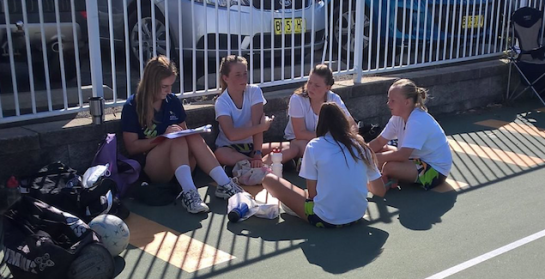A theory that is often used within a classroom setting is Ivan Pavlov’s theory of Classical Conditioning, where a student is rewarded for good work and are conditioned to be able to work to a certain ability, often there is a stimulus for the student to be rewarded but in many ways, this can cause for a negative long-term effect for the student as they many do the work primarily for the reward aspect (Churchill, et al., 2015). Within schools, I have witnessed this theory be used in a positive aspect as the students become highly engaged in the content to ensure that they are given a reward. But one of the first negative experiences that I had as a teacher was at a special needs school which had a wide range of disabilities. The school did cater to the needs of the students but due to range of behaviorisms at the school, it did cause for some of the students to become unstable and violent. On one of the days, a student was able to complete a task but due to not getting a reward star, the student became violent which ending becoming very violent and hurt themselves extremely bad. Because of this experience, it caused me to reflect on the on the teaching methods that are used within schools; in this particular case, it portrayed Pavlov’s theory of Classical Conditioning. In this situation, Pavlov’s theory of Classical Conditioning was used negatively as this resulted in the wellbeing of the students being put at risk due to this student becoming violent towards the academic environment (Churchill, et al., 2015). As per the Australian Professional Standards for Teachers (APST), the wellbeing and safety of students are the top priority within a school (Australian Institute for Teaching and School Leadership, 2012). This meaning that this theory of Classical Conditioning does have negative connotations as it does not ensure that the students will only react in a positive manner. With this being stated, due to the school being a school that caters for special needs the teachers would need to adapt their own teaching abilities to ensure that all the students would be able to grow and evolve in a learning environment (Australian Institute for Teaching and School Leadership, 2012).
One of the most important ideologies of teaching that I believe in is Bandura’s Social Cognitive theory as it attempts to aid the student’s self-belief and worth within an educational setting. As it reflects on observation and imitation, it supports students who are visual learners as they mimic the appropriate responses from the teacher and allows for a deeper understanding. In the classroom, I have experienced this in a positive manner in a special needs school. The intention of the class was to support students that have issues with conveying and identifying emotions. In this particular class, the main emotion that was focused on was anxious. As the teacher, support teacher and I acted out the emotion by portraying it with our body language and facial expressions, the students were able to mimic our actions and gain an insight into what anxiety was. Initially, we played a video that explained what feeling anxious was like both mentally and physically and then having the students reenact this emotion, it allowed for the students to understand what feeling anxious looked like as well as recognize what it felt like. After portraying this emotion as a dramatization, one of the students came up to the support teacher and I to explain that she felt this emotion when she had to sing or dance in class; with expressing this emotion it allowed for us to gain a deeper insight into psyche of this student who struggled with conveying her own emotions (Churchill, et al., 2015). In this circumstance, the APST were met as the students were given a lesson to help develop their emotions and how they behave can convey certain notions for others. (Australian Institute for Teaching and School Leadership, 2012) With this class, the teachers were ensuring that the safety of the students were met as well as help create a secure learning environment as these students learnt how to convey this emotion rather than having a breakdown nor panic attack which would affect the entire classroom environment both socially and physically (Australian Institute for Teaching and School Leadership, 2012).
Anxious Video Below:
On the other hand, in a mainstream school in which I taught at use other techniques and theories to aid in the classroom setting. Within a junior year of high school, the teachers were using more a stimulating class by asking student rhetorical questions and making them create their own ideals and arguments. At this school, I was teaching English to junior classes and I was informed by the head of department that the way that English was run at this school was based off the students’ ideas and thoughts that are guided by the teacher rather than being instructed what was the main themes and arguments; this making the students create and develop their own higher order of thinking. In this aspect, notions of Jean Piaget’s theory of Cognitive development was displayed in this particular setting (Churchill, et al., 2015). As Piaget’s theory of Cognitive development challenges the notion that some children have intelligence than others as learning is a process that every child undertakes; it just depends on how well the child has been able to understand the content. Therefore in this school, the use of the Cognitive development theory was implemented very well but does have its limitations as the chosen text for this class was quite difficult and many of the students required the audio book version so that they would be able to understand the context. Although with these classes being student centered, it allows for the teacher to gain an understanding of how well they have comprehended the unit or text overall but miscommunication from the students can cause the wrong notions to be brought up (Churchill, et al., 2015). Even though this is effective short term, it can portray the teacher as being lazy or neglectful as they are not being as dutiful towards the students as they should be; this ultimately means that the teacher is disregarding the APST as both the academic growth and wellbeing of the students may be affected negatively (Australian Institute for Teaching and School Leadership, 2012).
Classrooms in the present day tend to be more diverse than in the last century due to immigration over the last fifty years; this means that for teachers there will be multiple cultures, religions and beliefs in any given school. In some schools, there will be more diverse schools because of socio-economic backgrounds but regardless a teacher must ensure that they do not offend, disrespect or alienate any student (Australian Institute for Teaching and School Leadership, 2012). One of my experiences with educating students with diversity was with the biography “The Happiest Refugee” written by Anh Do. With studying this novel, many of the students had a few revelations due to the direct and in-direct issues of racism that has affect the author. This impact of understanding the causes and effects of racism on the students forced them to have a deeper understanding of the peers and the society as it may change the way that they act or think about different cultures. This class reminded me more so Jane Elliot’s social experiment “Blue eyes- Brown eyes” rather than pedagogical approaches as it forces students to understand the impact of their actions and opinions (Churchill, et al., 2015). I believe this fundamental for teaching as students should not be neglected or alienated due to their race or religion; which relates directly back to the APST as racism or prejudices cannot be held accountable within a classroom (Australian Institute for Teaching and School Leadership, 2012). This experience of watching the students react the consequences of racism was one of the most fulfilling as many of students had diverse backgrounds and realized how societies can be divided due to differing beliefs. With studying this biography, the students had studied “To Kill a Mockingbird” but to put it into a modern content and local, I believe and a greater impact on the students.
Blue Eye Brown Eye experiment below:



